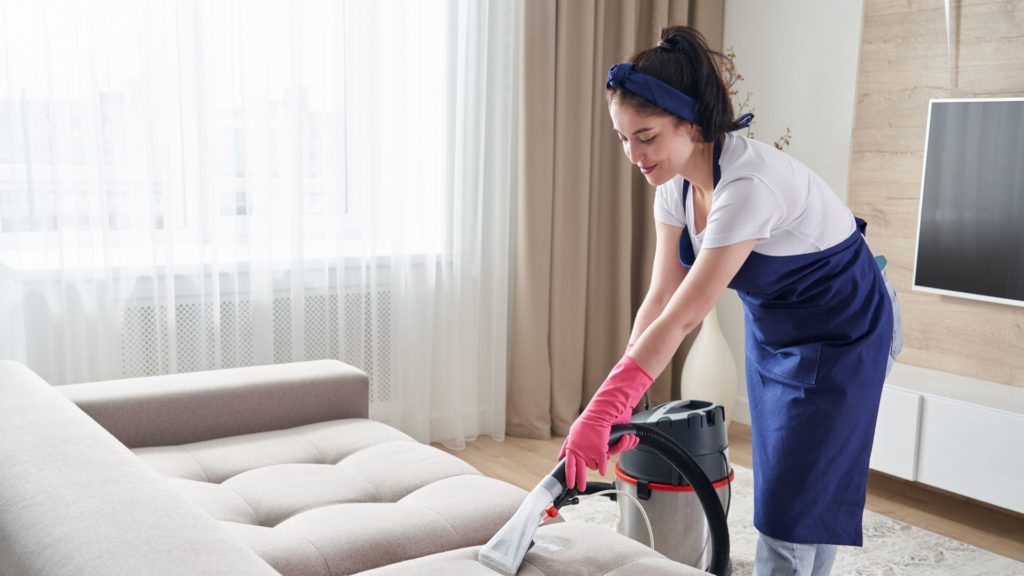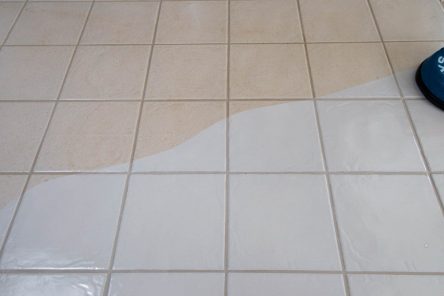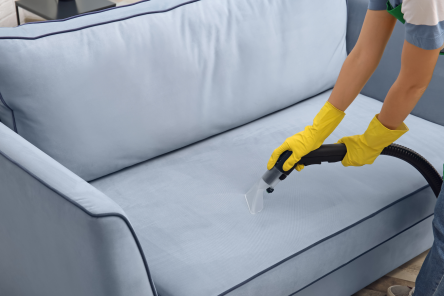There’s nothing quite like sinking into your favorite couch or recliner after a long day. These pieces of furniture invite rest into our homes. However, over time our upholstery becomes dirty and dingy from everyday use. Stains, dust, and grime build up in the fibers making our furniture less inviting.
Regular upholstery cleaning is essential for extending the life of your furniture and maintaining a fresh, clean home environment. Don’t let dirty upholstery make your home feel dingy! Follow these simple tips to keep your upholstery looking its best.
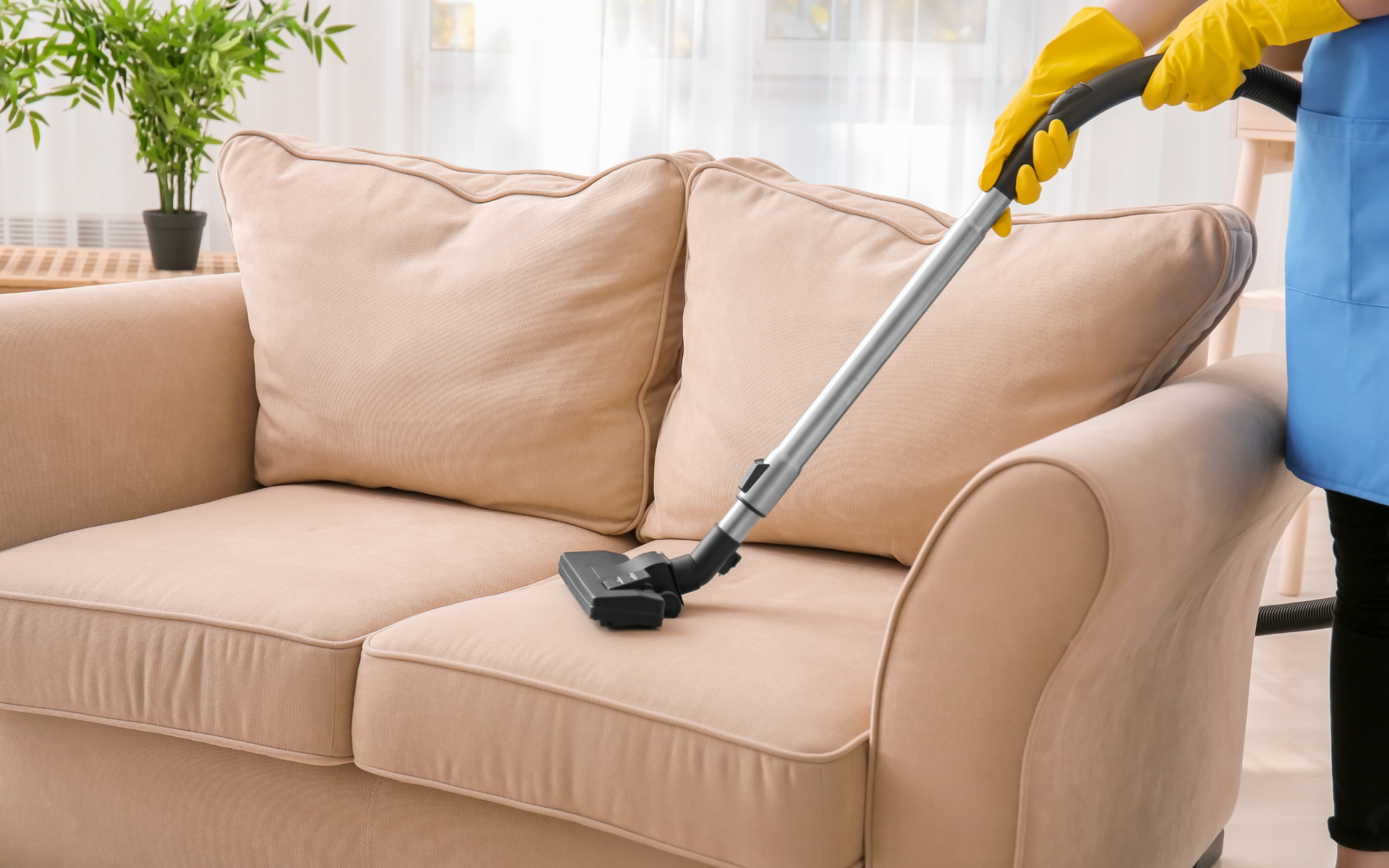
The Problem – Why Upholstery Needs Regular Cleaning
Life happens on our upholstered furniture. We eat meals, nap, let pets up, and relax with family. All this living leaves stains and soils deep in the fabric. If we don’t clean regularly, those stains become permanent and fabrics break down more quickly.
Some common upholstery problems include:
- Food stains – Spaghetti sauce, chocolate, grease, and drinks like wine or coffee leave obvious stains if not cleaned up quickly. Food debris also attracts bugs and odors.
- Dust and dirt build up – Dust settles into fabric fibers over time. Dirt and debris tracked in from outside also accumulate. This leaves the upholstery looking dingy and dull.
- Pet dander and hair – Dogs and cats spend lots of time on furniture. Their dander, hair, and oils build up in the fabric. This can cause odors and be problematic for those with allergies.
- Body oils and skin cells – As we use upholstered furniture, our skin rubs off on the fabric through skin oils and dead skin cells. This causes visible build-up over time.
- Hard-to-reach spots – Areas like cushions, crevices, and undersides of furniture attract and trap dirt, dust, and debris. These spots need regular deep cleaning.
Ignoring these upholstery problems allows stains to become permanent and fabrics to break down more quickly. Regular cleaning keeps upholstery fresh and extends its life.
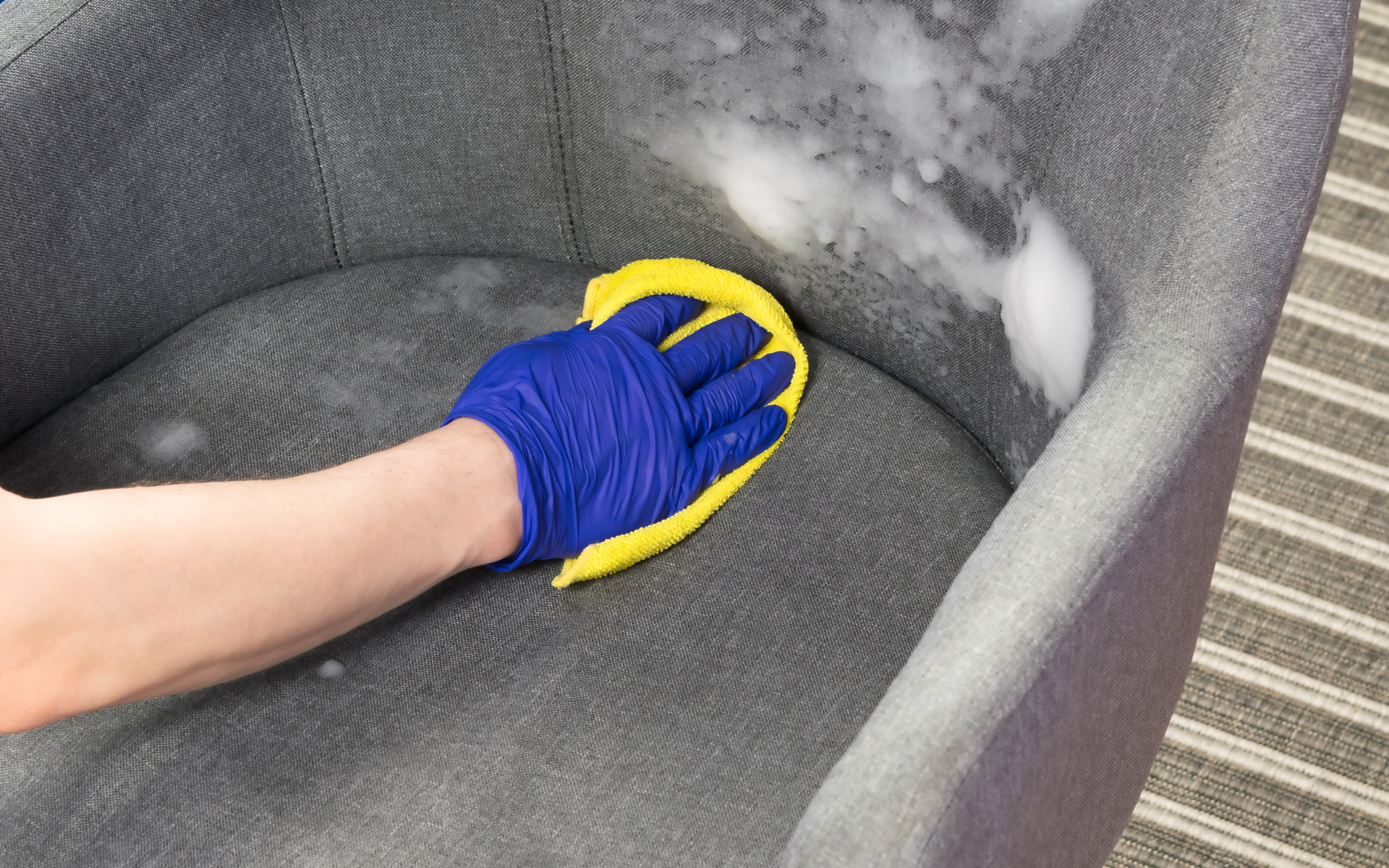
The Solution – Upholstery Cleaning Tips for Home
Cleaning upholstery may seem daunting, but it’s easier than you think with some simple tips! Here are effective methods for cleaning upholstery at home:
Check the Furniture Tag
The first step is to check the manufacturer’s tag before cleaning. This will indicate the best cleaning method for your specific upholstery fabric. Tags will provide details like:
- Fabric content – Cotton, polyester, leather, etc.
- Cleaning code – W, S, X, or WS for example. W means water-based cleaner, S is solvent-based, and X means vacuum only.
- Other instructions – If bleach can be used, how to spot clean, etc.
According to the American Cleaning Institute, following the manufacturer’s care tag is crucial for cleaning upholstery correctly and avoiding damage. Always refer to the tag before attempting any cleaning method.
Vacuum First
The Carpet and Rug Institute recommends vacuuming upholstery at least once per week to prevent the buildup of soils and allergens within fabric fibers
Regular vacuuming is the easiest way to remove surface-level dust, dirt, and debris from upholstery. Use the soft brush attachment and run it over all surfaces. Get into crevices and between cushions.
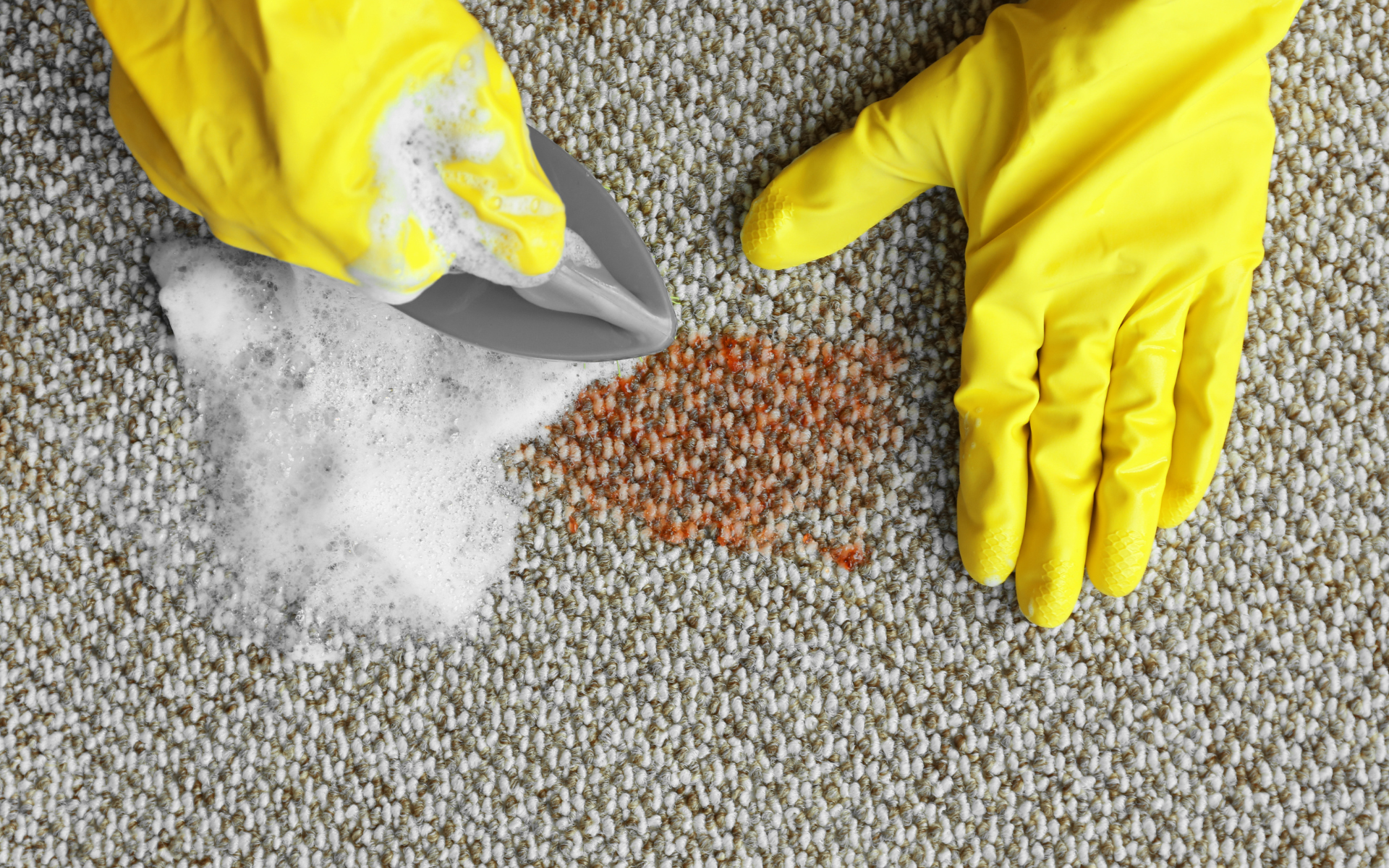
Spot Clean Stains
Don’t let stains sit! Address them as soon as possible with spot cleaning.
For water-safe fabrics, use a small amount of mild dish soap and warm water. Dab the stain gently towards the center to pull out the spot. Avoid aggressive rubbing.
For delicate fabrics, use an upholstery spot cleaner formulated for that material. Always test on an inconspicuous area first.
Blot stains with a clean, dry cloth and let air dry completely. Repeat if needed for tough stains. Getting to stains quickly prevents permanent setting.
Deep Clean with Portable Steam
Every few months, do a deeper cleaning of upholstery using steam. Portable steam cleaners are inexpensive, chemical-free, and great for home use.
Check that your fabric is steam-safe first. Then, pass the steam cleaner’s overall upholstery surfaces using the appropriate attachments for different areas. Steam helps release dirt and odors from deep in the fibers.
Let the fabric dry completely before using. This may take a few hours. Open windows to aid drying.
Other Effective Cleaning Methods
- Water-based upholstery shampoo – Great for cotton, linen, and polyester blends. Spot test first and follow product instructions. Rinse and blot dry thoroughly after cleaning.
- Dry cleaning solvents – Good for velvet, silk, and other delicate fabrics. Wipe on and wipe off quickly. Use ventilation and wear gloves.
- Baking soda – Functions as a fabric freshener and odor absorber. Sprinkle on, let it sit for 30 minutes, and vacuum off.
- Gentle laundry detergent – Dilute non-bleach detergent in warm water for a cleaning solution. Use sparingly and rinse thoroughly.
- Vinegar – Mix equal parts vinegar and water in a spray bottle. Spritz on and wipe off to clean and deodorize. Let air dry. Test first.
No matter the cleaning method, read the manufacturer’s instructions and spot test first to prevent upholstery damage. Allow plenty of time for fabrics to completely air dry before using.
Maintenance Between Deep Cleans
- Vacuum upholstery 1-2 times per week to prevent dirt buildup. Use attachments to reach crevices.
- Immediately dab spills and stains to prevent setting. Avoid aggressive rubbing.
- Brush off crumbs and debris after meals or crafting.
- Rotate cushions weekly so wear occurs evenly.
- Fluff and smooth cushions and pillows to maintain shape and loft.
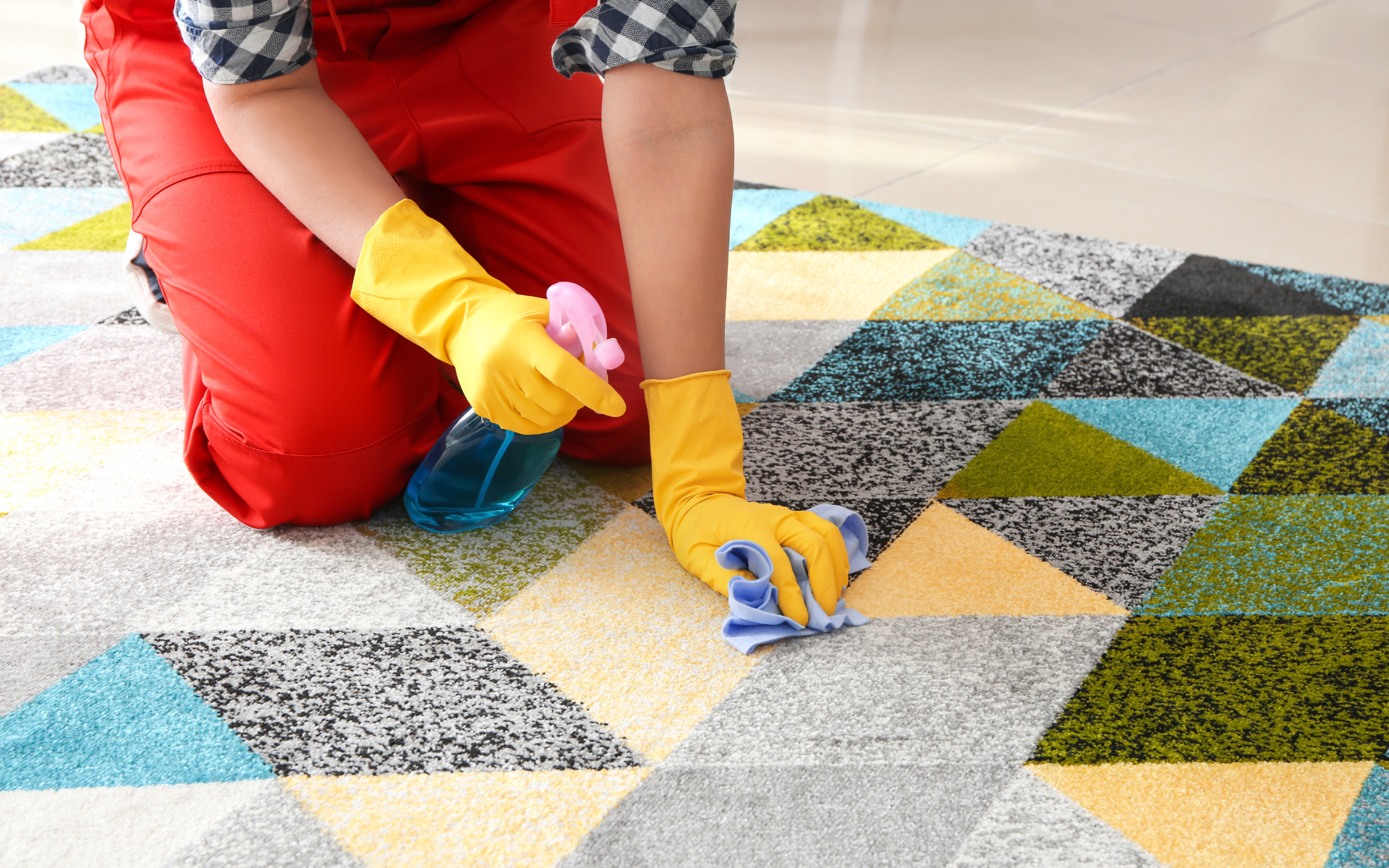
Special Considerations for Specific Fabrics
Upholstery comes in many different materials that require customized cleaning. Follow these tips for your specific fabrics:
Leather
- Check manufacturer instructions first. Stay away from water, heat, and harsh chemicals on real leather.
- Vacuum gently with a soft brush attachment weekly.
- Wipe down monthly with a small amount of leather cleaner or mild soap on a damp cloth.
- Use leather conditioners to prevent cracking and fading. Test on a hidden spot first.
- For stains, blot immediately and use a leather stain remover if needed.
Cotton
- Most cotton upholstery can be water-washed. Check codes first.
- Use mild detergent and cool water. Avoid bleach.
- Rinse thoroughly to remove all soap residue which can cause rapid re-soiling.
- Air dry fully before replacing cushions on furniture.
Polyester & Polyester Blends
- Vacuum frequently with a brush attachment.
- Most can be spot-cleaned with water-based upholstery cleaner. Do not overwet.
- Blot any excess moisture to prevent water rings or shrinkage.
- For odor removal, sprinkle baking soda, let sit briefly, and vacuum off.
Silk
- Delicate fabric that requires special care.
- Clean with dry solvent only using small amounts and proper ventilation. Spot test first.
- Avoid water, heat, and friction which can damage silk permanently.
- Vacuum using the lowest suction setting and with a soft brush.
- Steam cleaning silk is not recommended.

Tips for Families & Pets
Homes with kids and pets require some extra upholstery cleaning diligence. Follow these tips to tackle family stains:
- Clean spots immediately before they have a chance to set. Kid-related stains include juice, chocolate, markers, and mud. Pet stains involve urine, dirt, slobber, and hair.
- Have stain remover and cleaning wipes handy for quick treatment. Keep them inside table drawers or under couch cushions.
- Attach slipcovers to furniture in high-traffic areas like family rooms. They protect upholstery and come off easily for washing.
- Vacuum and steam clean upholstery weekly in kid and pet zones. Set reminders to stay on top of it.
- Use durable, stain-resistant fabrics like microfiber if reupholstering. Avoid light colors that show everything.
- Place washable blankets or throws over upholstery to protect underneath. These contain the mess and are easy to throw in the laundry when dirty.
- Keep kids and pets off furniture immediately after eating to avoid grease stains. Designate pet beds/blankets.
- Train kids and pets to stay off certain upholstery. Keep tricky fabrics looking nice longer.
Don’t give up your beautiful upholstery just because you have rambunctious kids or pets! With some extra diligence, you can keep it looking fresh.
Final Thoughts
Upholstery cleaning doesn’t need to be a dreaded chore with the right tips and methods. Regular maintenance keeps your furniture looking its best and your home feels inviting.
Always refer to the manufacturer’s instructions before cleaning to avoid damage. Then utilize simple solutions like vacuuming, spot cleaning, and steam to care for fabrics properly. Establish a routine to tackle upholstery cleaning proactively.
With just a little effort, you can maintain clean, attractive upholstery. Set your furniture free from stains and odors! Follow these effective tips and enjoy the comforts of home surrounded by fresh, well-cared-for upholstery.


